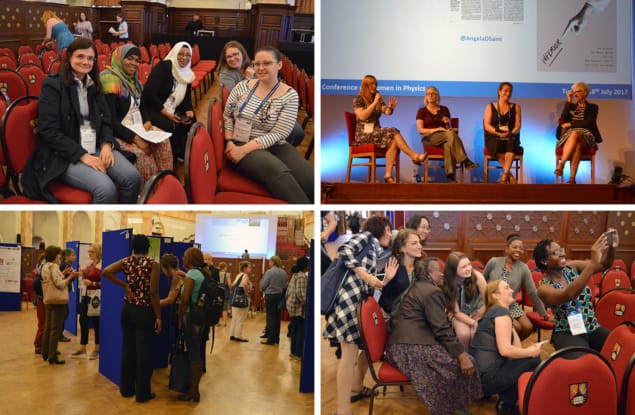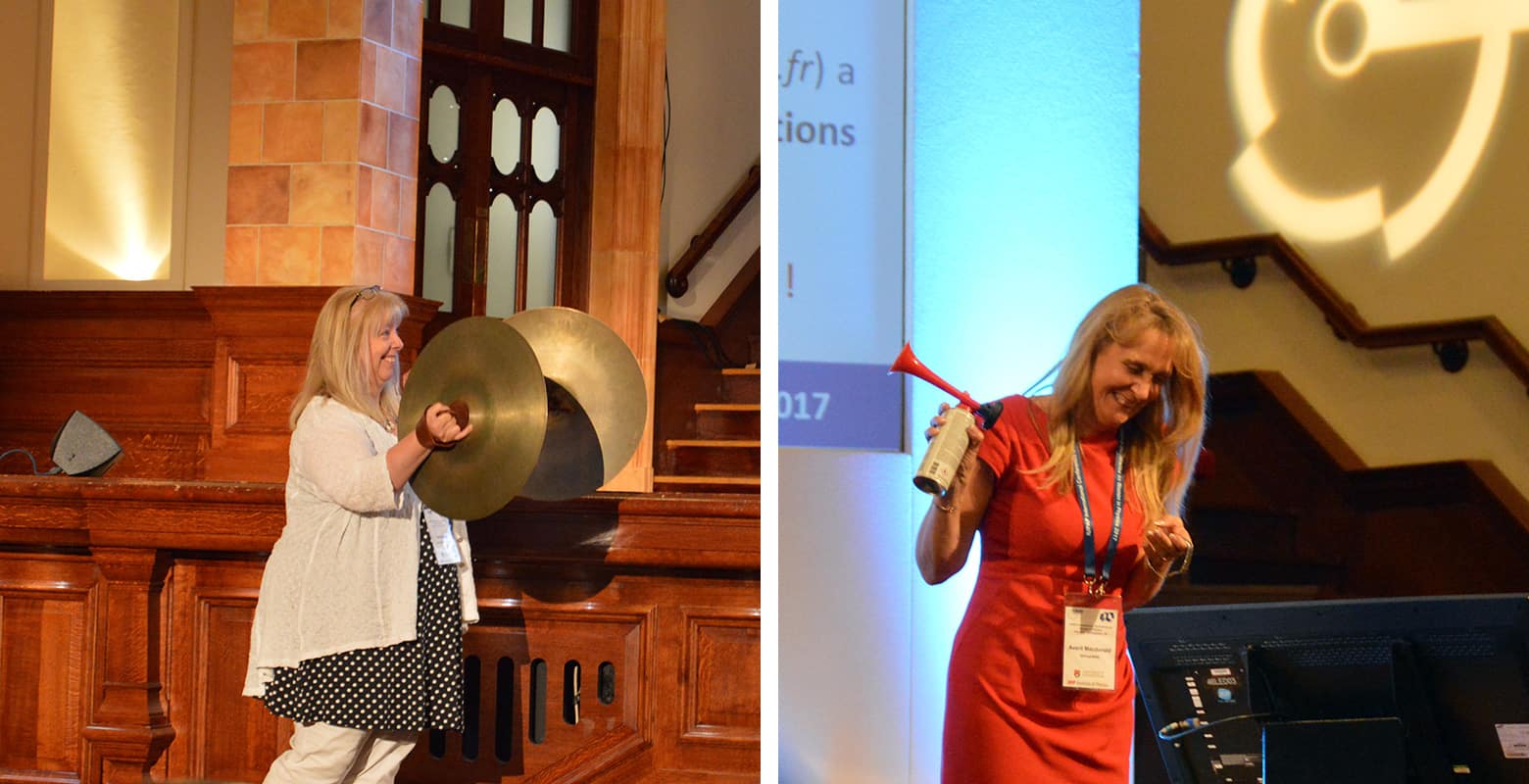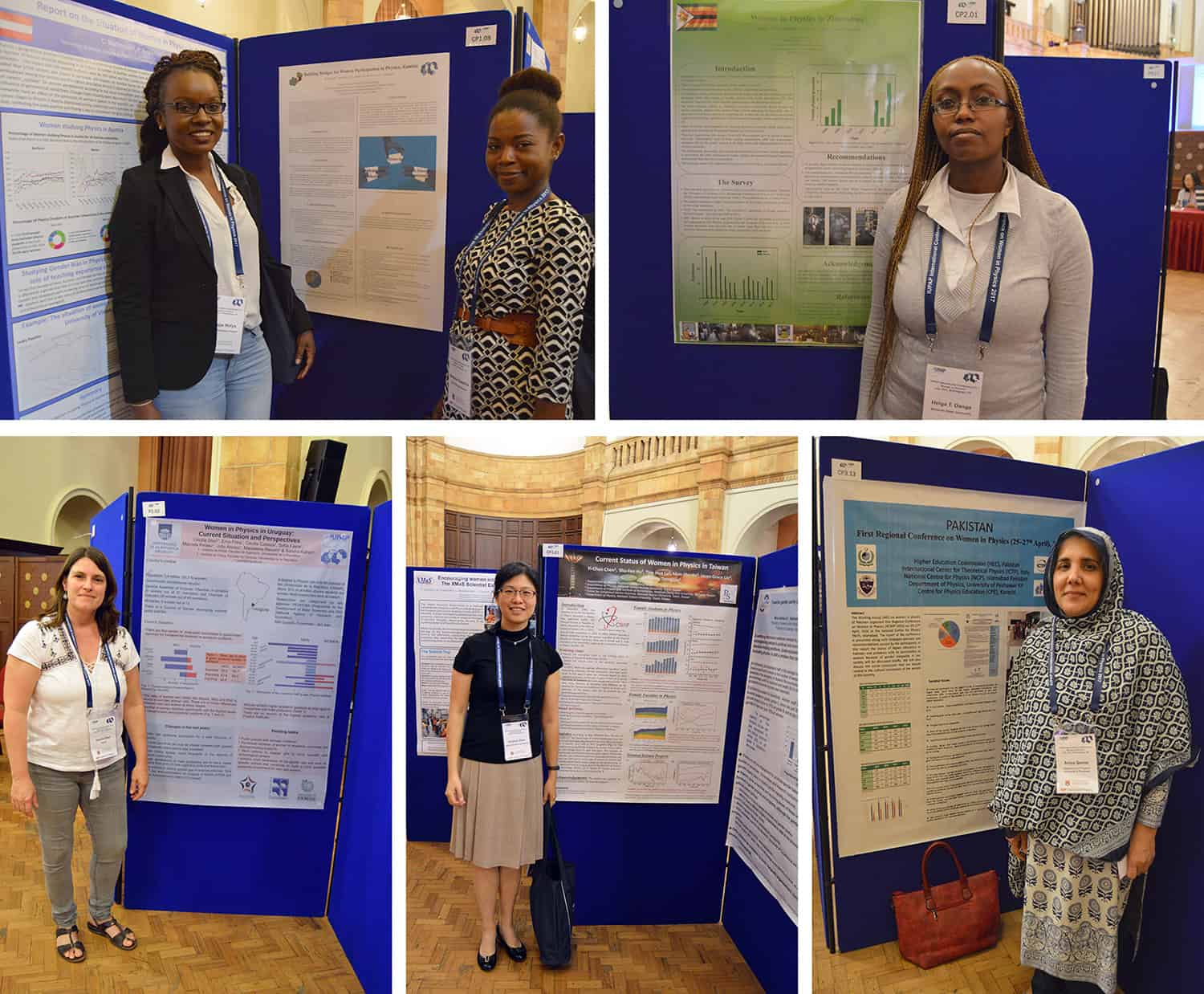Sarah Tesh reports from the International Conference on Women in Physics in Birmingham

A couple of weeks ago, Physics World received an e-mail that made my blood boil. The sender requested for his comments not to be published, so he shall remain nameless but here’s the jist of his message:
The latest issue of Physics World contained too many articles on women in physics (it had five small pieces on the topic). He finds the subject tedious and thinks it no longer needs covering – but it’s OK for him to say this because his daughter is doing physics at university.
In my opinion, this is an excellent example of exactly why it is important to talk about equality in physics. Some members of the community just don’t see that there is still a problem.
In an excellent coincidence, I signed up for the International Conference on Women in Physics (ICWiP) that very week. The conference is run by the Institute of Physics (IOP) and the International Union of Pure and Applied Physics (IUPAP) and has been taking place this week at the University of Birmingham in the UK. ICWiP gives people from around the world, and at all stages of their careers, a chance to discuss and tackle the many topics surrounding women in physics. These include under-representation, stereotypes, conscious and unconscious bias, inequality in pay, the drop-off as you progress through academia…the list could go on.
Most importantly, however, the event gives women physicists a chance to meet, share stories and network – a chance to realize you are not the only one. This sounds cheesy, I know, but considering the representative from Zimbabwe, Helga Danga, is the only female physicist she knows of in her country, it is also surprisingly accurate.
While I could only attend the first two days, there is so much I would like to talk about. Every woman in attendance was incredibly impressive and inspiring and I could write an article on each individual. Sadly, this is not feasible but I shall endeavour to give you an insight over a couple of blog posts and with the help of Jess Wade from Imperial College London.
When talking about women in physics, a common starting point is to look at the stats — for some people, especially scientists, it is only when they see the statistical evidence that they believe there is a problem. The data presented at ICWiP was damning and undeniable, and while too vast to list in detail here, it all points in the same direction — women in physics are significantly under-represented, paid less and promoted less.
But as well as looking at statistics, it is also important to listen to the stories of individuals and build a plan of action based upon personal experiences. A key theme of ICWiP was therefore interaction and collaboration. In her welcome address, conference chair Nicola Wilkin stressed that this was not to be a passive conference. She even set a “homework assignment” for delegates to get photographic evidence of themselves making two new associates. Nicola’s “partner in crime” Igle Gledhill, chair of IUPAP’s Women in Physics Working Group, also emphasized how the current political climate in some countries is making it harder for all scientists, let alone women in physics, and asked us to put our heads together as much as possible. “Please think – while it’s still legal,” she implored.
The format of the conference was designed to encourage these discussions through plenary talks, workshops, posters and social events. While, let’s be honest, many people do not find poster sessions the most enthralling part of a conference, the organizers of ICWiP used an ingenious method of nurturing interest. The delegates from 39 countries presented the overview of their posters in 90-second talks, attempting to entice us to visit their stands. We all know that time-keeping for presentations is a fine art, so Monday’s session featured chair Averil MacDonald sinisterly creeping up the stage stairs with a foghorn at the 15-second countdown. On Tuesday this was upgraded to a large set of cymbals brandished by chair Val Gibson.

Macdonald and Gibson’s approach ensured a relaxed atmosphere with everyone enjoying the antics, while also making it easy to listen to the quick-fire presentations. I found it fascinating to hear about the status of women in physics throughout the world. While some countries face problems similar to those in the UK, others have to compete with extra obstacles.
One of the more harrowing stories came from Anisa Qamar of the University of Peshawar in Pakistan. “The first problem is the war against terrorism,” she explained. Peshawar is in the Khyber Pakhtunkhwa province, bordering Afghanistan. “There is a completely chaotic situation in Afghanistan and that area. The Taliban are actually destroying the girls’ schools because they don’t allow women to learn.” She told me two-thirds of women in Pakistan cannot read or write and 36% of girls are out of school. As the first and only female professor in the province, however, Anisa is determined to make a difference. In 2016 she arranged the first Regional Conference on Women in Physics, despite the opposition of her head of department and the institute’s dean. Thankfully, she got funding from the Higher Education Commission of Pakistan and the International Center for Theoretical Physics, enabling around 150 female undergraduate and postgraduate students to attend and discuss the societal issues and constraints. One of their key conclusions was that women should be exposed to training in technologically advanced countries to help their professional development before returning to Pakistan. “One woman can change and educate a family. One woman can change a lot if she is determined,” she said.
A common problem in many countries is that the community does not understand what the point of a physicist is, which means fewer physicists and fewer career choices. Mwape Mofya and Mwansa Kawesha from the Cancer Diseases Hospital in Zambia described how women in their country are taking advantage of the opportunities and funding targeted at promoting women in science. Unfortunately, however, this is not translating to physics because people cannot make the link between the field and what it can do to help the community. Mwape and Mwansa hope that mentoring and role models may help spread awareness of physics.
While some countries are in the early stages of change, others are further down the pipeline. “We have seen a lot of improvement in the last 10 years in Taiwan,” said Yi-Chun Chen from the National Cheng Kung University. She highlighted two promising changes in policy. In 2007 the Ministry of Science and Technology (MOST) introduced a change to its funding policy, where female researchers who have given birth in the past five years are evaluated on the past seven years of research outcomes instead of five to take into account maternity leave. Furthermore, the Ministry of Education has since added a two-year extension to the tenure clock to account for parental responsibilities. While the number of female professors has increased in recent years, women are still outnumbered by men. “We would like to check if [the extensions] can continue to improve this in future years.” But it’s not just policy that is holding women back. “There’s still some social customs because women take much more time with their families,” explained Yi-Chun. And as in Zambia, there’s a lack of awareness of physics. “Female [science] students in Taiwan are encouraged to study medicine because their parents think they will get better jobs.”
Finland, meanwhile, is often considered a forerunner in equality, but Jennifer Ott from Helsinki Institute of Physics highlighted that for physics, not much has changed in recent years. For example, only 7% of physics professors are female. Jennifer explained how the physics community, although not negative or discriminating, can lack proactive attitudes. Consequently, in recent years women in science groups in Finland have been spreading the message with workshops, informative websites, seminars and outreach programmes for schools. Furthermore, while the country offers very long parental leaves of up to three years, it is very unevenly distributed between men and women, and discussions have been taking place on how to improve the situation.

For me, the biggest highlight of ICWiP was hearing from all of these inspiring women. The firsts they have achieved and challenges they have overcome are incredible. The conference was also one of the most comfortable and friendly I’ve been too, with everyone willing to chat with strangers and discuss the issues and their lives.
Stay tuned for more posts on the event, covering bias and stereotypes, game-changing physcisists and the great Dame Professor Jocelyn Bell-Burnell. Later in the year there will also be a couple of podcasts on women in physics, which will include interviews with delegates at the ICWiP.



